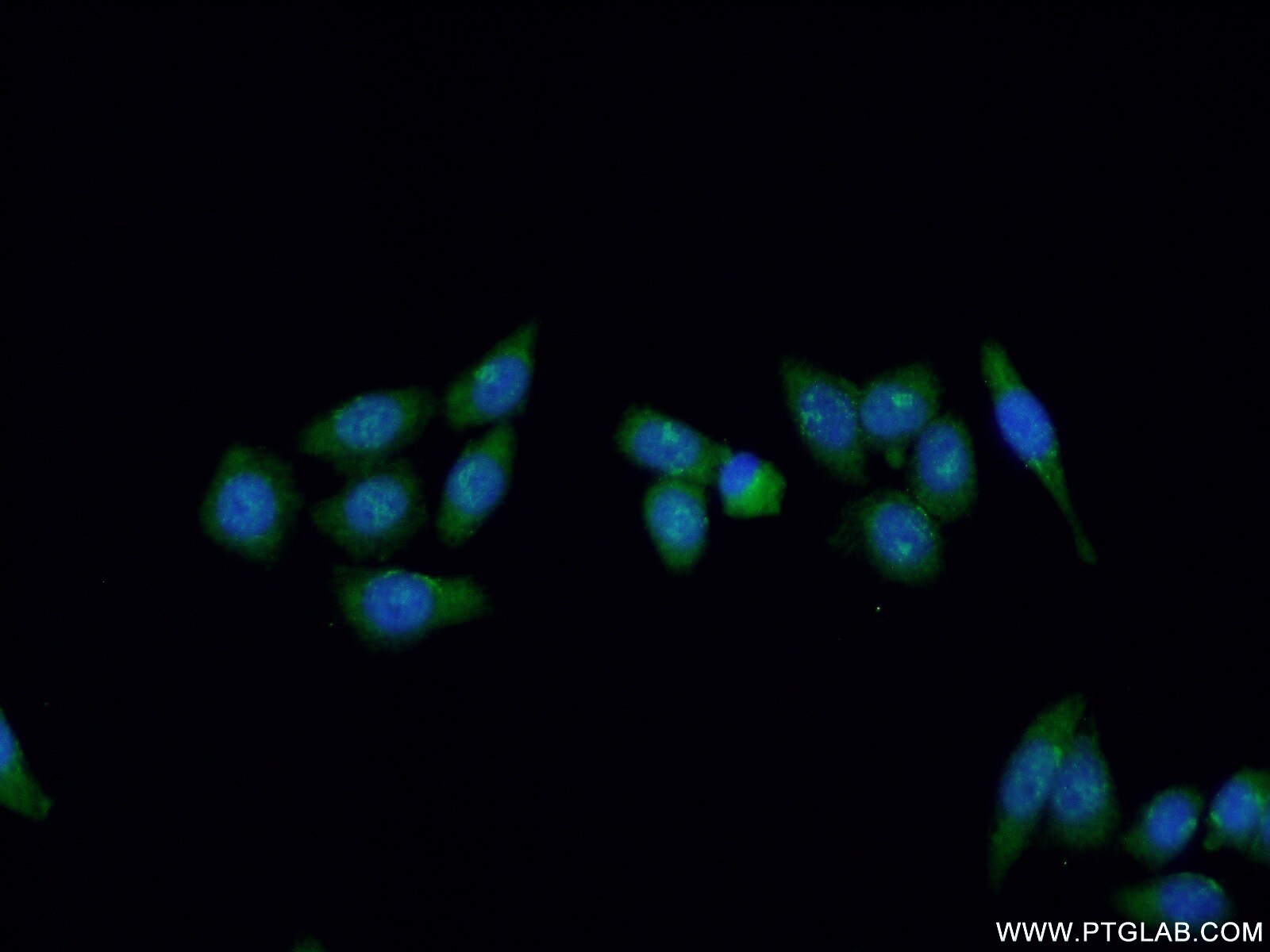- Phare
- Validé par KD/KO
Anticorps Polyclonal de lapin anti-XPG
XPG Polyclonal Antibody for WB, IP, IF, ELISA
Hôte / Isotype
Lapin / IgG
Réactivité testée
Humain et plus (1)
Applications
WB, IF/ICC, IP, ELISA
Conjugaison
Non conjugué
N° de cat : 11331-1-AP
Synonymes
Galerie de données de validation
Applications testées
| Résultats positifs en WB | cellules HeLa, cellules Daudi, cellules HepG2 |
| Résultats positifs en IP | cellules HeLa |
| Résultats positifs en IF/ICC | cellules HeLa |
Dilution recommandée
| Application | Dilution |
|---|---|
| Western Blot (WB) | WB : 1:500-1:3000 |
| Immunoprécipitation (IP) | IP : 0.5-4.0 ug for 1.0-3.0 mg of total protein lysate |
| Immunofluorescence (IF)/ICC | IF/ICC : 1:20-1:200 |
| It is recommended that this reagent should be titrated in each testing system to obtain optimal results. | |
| Sample-dependent, check data in validation data gallery | |
Applications publiées
| KD/KO | See 3 publications below |
| WB | See 9 publications below |
| IF | See 1 publications below |
Informations sur le produit
11331-1-AP cible XPG dans les applications de WB, IF/ICC, IP, ELISA et montre une réactivité avec des échantillons Humain
| Réactivité | Humain |
| Réactivité citée | Humain, souris |
| Hôte / Isotype | Lapin / IgG |
| Clonalité | Polyclonal |
| Type | Anticorps |
| Immunogène | XPG Protéine recombinante Ag1874 |
| Nom complet | excision repair cross-complementing rodent repair deficiency, complementation group 5 |
| Masse moléculaire calculée | 1186 aa, 133 kDa |
| Poids moléculaire observé | 200 kDa |
| Numéro d’acquisition GenBank | BC031522 |
| Symbole du gène | ERCC5 |
| Identification du gène (NCBI) | 2073 |
| Conjugaison | Non conjugué |
| Forme | Liquide |
| Méthode de purification | Purification par affinité contre l'antigène |
| Tampon de stockage | PBS avec azoture de sodium à 0,02 % et glycérol à 50 % pH 7,3 |
| Conditions de stockage | Stocker à -20°C. Stable pendant un an après l'expédition. L'aliquotage n'est pas nécessaire pour le stockage à -20oC Les 20ul contiennent 0,1% de BSA. |
Informations générales
The human genes correcting DNA repair defects are termed excision-repair cross-complementing or ERCC genes. The ERCC5 gene corrects the excision repair deficiency of Chinese hamster ovary cell line UV135 of complementation group 5. The human ERCC5 gene product is a structure-specific endonuclease required for making the 3-prime incision during DNA nucleotide excision-repair (NER). It also plays an important role in regulating DNA excision repair, removal of bulky lesions caused by environmental chemicals or UV light [PMID:22815677]. The calculated molecular weight of ERCC5 is 133 kDa, but the modified ERCC5 protein is about 200 kDa.
Protocole
| Product Specific Protocols | |
|---|---|
| WB protocol for XPG antibody 11331-1-AP | Download protocol |
| IF protocol for XPG antibody 11331-1-AP | Download protocol |
| IP protocol for XPG antibody 11331-1-AP | Download protocol |
| Standard Protocols | |
|---|---|
| Click here to view our Standard Protocols |
Publications
| Species | Application | Title |
|---|---|---|
Cell Human Rad52 Promotes XPG-Mediated R-loop Processing to Initiate Transcription-Associated Homologous Recombination Repair.
| ||
Mol Carcinog Associations between Expression Levels of Nucleotide Excision Repair Proteins in Lymphoblastoid Cells and Risk of Squamous Cell Carcinoma of the Head and Neck. | ||
Oncol Rep Characterization of the nucleotide excision repair pathway and evaluation of compounds for overcoming the cisplatin resistance of non‑small cell lung cancer cell lines.
| ||
Biochim Biophys Acta Stimulation of ribosomal RNA gene promoter by transcription factor Sp1 involves active DNA demethylation by Gadd45-NER pathway. |




